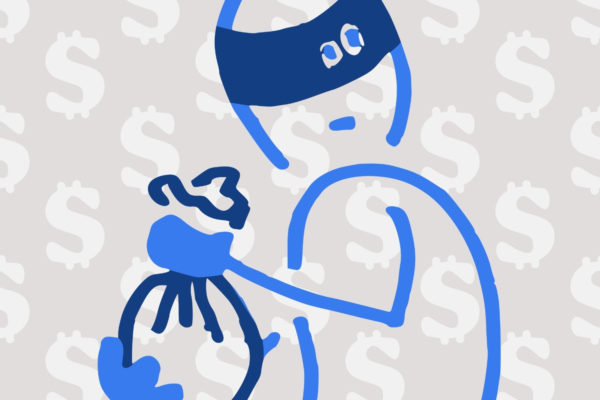
What Is Synthetic Identity Theft?

There’s no way around it: identity theft has become increasingly common. There are various kinds of identity theft, ranging from simply stealing someone’s credit card number or using another person’s name and Social Security Number to open accounts, to much more sophisticated approaches that can be extremely difficult to detect.
One of these newer and more complicated types of fraud is known as synthetic identity theft, which the Federal Reserve warns is the fastest growing financial crime. Here, we’ll review what constitutes synthetic identity theft and how you can protect yourself from this evolving form of fraud.
How Does Synthetic Identity Theft Occur?
Fraud prevention specialists have become more adept at preventing traditional forms of identity theft, and as a result, fraudsters have also evolved and now often resort to a new type of fraud: synthetic identity theft. This type of identity theft is a relatively recent phenomenon in which criminals combine different elements of various individual’s identities—or sometimes fake information—to create an entirely new identity. According to the FCT, synthetic identity fraud is the fastest-growing and hardest-to-detect form of identity theft, and now accounts for 80 to 85 percent of cases.
With synthetic identity theft, criminals apply for credit using entirely new identities created using a combination of real and fake forms of personally identifiable information (PII). A fraudster may meld one person’s Social Security Number, another’s address and date of birth, yet another individual’s email address or phone number in order to generate unique, but totally fake identities.
The criminal then applies for credit, usually in the form of a credit card using the fabricated identity. While the credit card company or bank will usually reject the application because the credit bureaus can’t match the name with the other information in its records, the mere act of applying for credit creates a credit file with the name of the fake ID.
This application process is something that many real people go through when they’re just starting to establish a legitimate credit history. However, because the fake identity now has a credit file, the criminal can set up bank accounts in the name of the synthetic ID to begin to build credit, buy insurance policies, enroll in medical benefits, establish cell phone accounts, or obtain driver’s licenses or passports.
Why Is Synthetic Identity Fraud So Hard to Detect?
You might be wondering why financial institutions can’t automatically detect this type of fraud. Traditional computer systems typically try to identify fraud with the assumption that the stolen identity will include information that correlates to only one individual. But when the information is an amalgamation of data points from different people—or entirely fake—these systems will often fail to flag it as fraudulent.
While it’s true that stolen Social Security numbers (SSNs) are relatively easy to find, when they are associated with fragmented information from other sources, or a fictitious name and address, it becomes more difficult to detect. At the moment, the U.S. government has no efficient way to confirm that a Social Security number matches with a date of birth or name, which further complicates the detection process. Finally, many criminals seek out Social Security numbers that are used infrequently, such as those belonging to young children, the elderly, or vulnerable adults.
How Can Synthetic Identity Fraud Impact Me?
Because the perpetrators of synthetic identity fraud can be extremely difficult to detect, the criminals often have time to establish and/or expand credit lines with their victims’ information. As it can take some time to build up a decent credit history, and therefore achieve high credit limits, the fraud can go on for years in some cases without the victim becoming aware. Once the criminal has reached a high enough credit limit, they max out these phony accounts with purchases and steal the money.
If your name or Social Security number is used as part of the fraud scheme, your identity can become tangled with someone else’s credit history as a result. Then, once the fraudster defaults on payments, debt collectors may begin to call without you having the slightest clue why they’re contacting you. Your credit history and score can also be impacted while the fraudulent charges are investigated.
What Can You Do to Protect Yourself from Synthetic Identity Theft?
Although criminals have become more sophisticated in recent years, and the number of data breaches has increased, fraud prevention tactics have improved and fraud prevention specialists are also evolving their methods. The advent of chip-read and PIN-enabled credit cards is expected to help reduce such crime, and financial institutions are increasingly using advanced analytics, identity element monitoring, and device intelligence to combat synthetic identity.
It’s great news that financial institutions are taking the threat of synthetic identity theft seriously—but you can also help protect yourself from this type of fraud!
Here are a few other steps you can take to help ward off the risk of synthetic identity theft:
- Only share your Social Security number after verifying why it’s needed.
- Destroy any documents you no longer need that have your Social Security number, banking and credit card numbers, and other personal info.
- Keep personal documents in a secure lock box.
- Install a mailbox that requires a key for entry to prevent mail theft.
- Check that your annual income is stated accurately on Social Security statements.
- Invest in a dark web monitoring service that scans your financial accounts for fraud.
- Regularly check your bank statements and free annual credit reports for discrepancies.
- If you suspect that a part of your identity has been stolen, inform your financial institution(s) and local law enforcement. Your bank or credit card company may need to freeze your account(s) to prevent further fraud while the discrepancy is investigated.
Stay Informed, Stay Vigilant
Staying up-to-date on the latest forms of identity theft can help you protect you and your family. Do your best to keep your personally identifiable information secure, and regularly check your credit report and financial accounts for strange activity. By doing so you’ll be one step ahead of fraudsters, and able to act quickly to minimize the consequences should you become the victim of identity theft.

